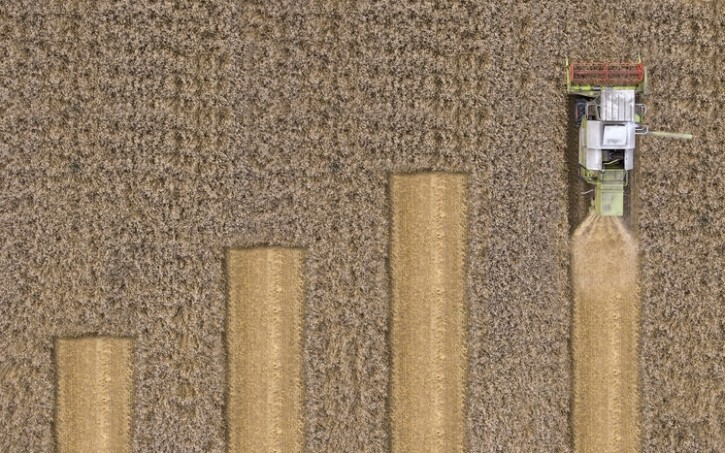Crop and feed market insights: WASDE, Brazilian weather, and soybean outlook

The US Department of Agriculture (USDA) projected a six-year high of 325.2 million metric tons (Mt) for global corn stocks by the end of the 2023/24 season. Despite this, major corn exporters such as Argentina, Brazil, Ukraine, and the US saw relatively unchanged ending stocks and stocks-to-use ratio compared to the previous month, as reported by AHDB.
The global outlook for wheat continues to be constrained, maintaining eight-year low ending stocks according to the recent WASDE.
The International Grain Council (IGC) also presented its first estimates for the 2024/25 season, foreseeing further tightening of global wheat stocks despite a larger harvest worldwide.
"First projections for 2024/25 wheat supply and demand point to a slightly larger harvest y/y (year-on-year), with potentially better yields seen more than compensating for a modest pullback in acreage. With offsetting changes for food and feed, consumption is projected to match the prior year's record level and exceed production, potentially leading to a further drawdown in stocks, to a six-season low. A modest retreat in trade is predicted, including smaller deliveries to China and the EU."
Short-term attention remains on Brazilian weather, particularly the Safrinha corn crop plantings in the upcoming weeks. Anticipated rainfall in the Mato Grosso region over the next seven days is expected to benefit soil moisture in this crucial production area, forecast the UK analysts.
Conab's Safrinha corn crop estimate, unchanged last week, might see adjustments in ira February update, they added.
Rains ease soy concerns
After a challenging period in November and December, recent rains in Brazil eased concerns about the soybean crop outlook, reads the review. Soybean harvesting started earlier than usual due to accelerated growth from the El Niño weather event, resulting in mixed yield outcomes influenced by varied weather conditions across the country, according to the AHDB team.
Meanwhile, the USDA reduced Brazil's soybean production by 2.5%, while Conab made a 3.1% cut in its latest update.
For Argentina, favorable conditions have led to an optimistic soybean outlook, prompting the Rosario Exchange to increase production estimates by 4% to 52.0 Mt.
The weakening of US soybean exports, influenced by a stronger dollar, has contributed to lower soybean prices, with USDA data showing a 14% decrease in exports over the previous week and a 27% decline from the four-week average.
A weakening of soybean exports from the US, aided from a strengthening of the dollar, also weighed on soybean prices, said the UK agri-commodity market experts. The latest USDA export data show exports down 14% over the previous week and 27% down from the four-week average.
The WASDE report also included a global rapeseed production estimate of 87.1 Mt, up 13.7% from the five-year average. Despite a slight downward revision in world oilseed stocks, supply is forecasted to be 3.8% higher than the previous year.
Increase in feed output for layers
Another report evaluating feed use in Great Britain shows that the poultry feed sector, in November last year, saw an increase in production compared to November in the year prior, with that boost driven by a rise in feed for laying hens (+6.4%) and turkeys (+31.5%). However, the production of broiler feed only marginally increased (+0.1%).
Although this improvement signals a potential stabilization, it's noted that poultry feed production remains below the five-year average, reflecting challenges faced by the industry, warned the reviewers.
"The poultry industry has been facing challenges of margins squeezed by high costs, with impacts from Avian Flu as well last season. If sustained, the edge up in poultry feed production in November could signal at least a more stable picture, or perhaps the very beginnings of a small recovery."
Pig feed production experienced a slight year-on-year increase in November but remained 5% below the five-year average, consistent with the challenges faced by the pig industry.
Total cattle and sheep feed production in November 2023 was below 2022 levels but to a lesser extent than in October.
Animal feed continues to be a significant demand source for UK cereals, with AHDB forecasting the use of 12.4 Mt of wheat, barley, corn, and oats as animal feed this season.














